New type of Yellow Head Virus may be causative agent
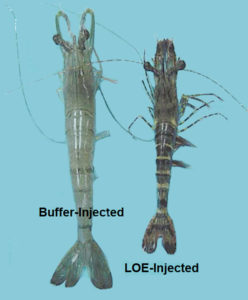
Since 2002, the majority of Thai shrimp farmers have had problems with severe growth retardation when rearing black tiger shrimp (Penaeus monodon). Normally after four months of uneventful culture, they expect to obtain an average animal weight of 25 to 35 grams. Instead, they find that more than 50 percent of the shrimp average only 5 to 10 grams.
Survival in affected ponds is usually quite normal at 60 to 80 percent, although some farmers report somewhat lower percentages. In severe cases, up to 80 percent of the shrimp are small. For these ponds, the average growth is less than 0.12 grams per day, in contrast to the 0.2 grams per day or higher growth normally expected for P. monodon over four months of culture.
Monodon slow growth syndrome
In spite of the large number of small shrimp, some shrimp in these ponds grow normally. This differential growth rate results in a very high coefficient of variation (CV) that ranges 30 to 80 percent. CV is a statistical measure of variability that is calculated by dividing the standard deviation by the mean.
The small shrimp are mostly active, but in many cases their body color is darker than normal. They can also have unusually prominent blue and yellow stripes on the swimming and walking legs.
The malady reflected in these small shrimp is now known as Monodon Slow Growth Syndrome (MSGS). It can be likened to Runt Deformity Syndrome (RDS), which is caused by Infectious Hypodermal and Hematopoietic Necrosis Virus (IHHNV) in P. vannamei. Very high CV are also observed in this condition.
Switch to P. vannamei
Obviously, MSGS is disastrous for Thai shrimp farmers. Many say it is almost worse than going through a White Spot Syndrome or Yellow Head Virus outbreak, since they have to carry on feeding the shrimp up to six months just to reach a break-even point. That is a long time to work for no profit.
Such bad experiences have caused many producers to turn to white Pacific shrimp (P. vannamei), since farmers have found that good specific pathogen-free (SPF) P. vannamei stocks grow at a more predictable rate. Unfortunately, the rush for P. vannamei seedstock resulted in the trading of nonSPF stocks, and some unwary farmers had the unfortunate experience of jumping from the frying pan into the fire when they were hit with RDS instead of MSGS.
New infectious agent suspected

The authors are attempting to find the cause of MSGS, and suspect a new infectious agent may be the cause. The reason for this speculation is that a survey of 32 ponds exhibiting MSGS using light microscopy, transmission electron microscopy (TEM), bacterial culture, and polymerase chain reaction (PCR) failed to reveal any known pathogen or pathogen combination, although many single or multiple infections by viruses, bacteria, and protozoa were found.
These included Monodon Baculovirus, Hepatopancreatic Parvovirus, and IHHNV. In addition, a number of unknown, purported viral particles ranging 17 to 45 nm in diameter were found in the lymphoid organs of some specimens. Although symptoms of HPV, which reportedly causes growth retardation in P. monodon, were found in some ponds, HPV was not present in all the problem ponds. The number of sampled shrimp with bacterial infections was relatively small.
The protozoans included a low prevalence of external Zoothamnium below 1 percent and a higher (10 to 15 percent) prevalence of a very small intracellular protozoan eventually identified by TEM as a new microsporidian in hepatopancreatic cells. The microsporidian is new for P. monodon in Thailand. Its prevalence was quite substantial in the MSGS ponds.
Again, none of the agents was ubiquitous in the problem ponds. In addition, a correlation analysis revealed that the severity of infection for these agents, either individually or collectively, tended to be equivalent in large and small shrimp in the same pond. About 10 percent of the MSGS ponds were negative for the known pathogens tested. Further, the known agents were all previously reported in Thailand, while the MSGS problem surfaced rather quickly all over the country, despite the lack of any fundamental change in rearing practices.
Inbreeding unlikely
It has been suggested that MSGS might be the result of P. monodon genetically weakened from inbreeding wild broodstock over 15 years of intensive P. monodon culture in Thailand. However, the sudden widespread occurrence of the MSGS problem and results from studies showing high genetic diversity in the wild P. monodon stocks argue against this proposal.
All in all, the authors’ studies suggested that MSGS resulted from a new agent or factor not revealed by their survey. It may act directly to cause slow growth or weaken the shrimp so they are more prone to infection by a variety of opportunistic pathogens. The pathogen could be entirely new or a new variant of a previously known group.
Unknown agent
The authors are following up on a few leads. The most convincing lead is the fact that bacteria-free homogenates of lymphoid organs from shrimp in MSGS ponds cause MSGS when injected into domesticated P. monodon. After three months, the shrimp injected with the lymphoid filtrate had significantly lower survival rates, lower body weights and higher CV than the buffer-injected controls.
The color of these shrimp was dark, and their antennae had distinctive stripes. The walking and swimming legs showed distinctive yellow-blue stripes, and the abdominal segments showed depressions that gave a bamboolike appearance. These features were similar to those of MSGS shrimp observed in the field. MSGS could be retransmitted in the same manner from the experimental shrimp.
New type of YHV?
Surprisingly, TEM examination of the injected shrimp showed abundant YHV-type filaments in the cytoplasm of lymphoid organ spheroidal cells, but they were almost all in the virion-assembly stage, and very few mature virions with envelopes were present. Less common were the 17- to 45-nm purported viral particles often observed in the control group.
A small fragment of the RNA of the YHV-type virus was sequenced and found to differ by approximately 20 percent from the sequence of the “original” virulent YHV earlier reported in Thailand. It also differed by about 20 percent from the sequence of Gill-Associated Virus, a YHV complex virus reported in Australia.
Conclusion
Since 2002, many Thai shrimp farmers have observed severe growth retardation of P. monodon in their ponds. Ongoing research suggests that known agents are not the main cause of Monodon Slow Growth Syndrome. The authors are pursuing the option that a new type of Yellow Head Virus may be the causative agent of MSGS, but have not excluded the possibility that other agents are the cause of the slow growth, either alone or in combination with the new YHV.
Since the lymphoid organ extracts contain several unknown cytoplasmic particles with a range of diameters, attempts to separate them into fractions and test them individually and in combinations will continue. The major problem is that bioassay tests take two to three months for results assessment, which slows down the investigative process. Work would go much faster if the agent were lethal.
(Editor’s Note: This article was originally published in the April 2004 print edition of the Global Aquaculture Advocate.)
Now that you've reached the end of the article ...
… please consider supporting GSA’s mission to advance responsible seafood practices through education, advocacy and third-party assurances. The Advocate aims to document the evolution of responsible seafood practices and share the expansive knowledge of our vast network of contributors.
By becoming a Global Seafood Alliance member, you’re ensuring that all of the pre-competitive work we do through member benefits, resources and events can continue. Individual membership costs just $50 a year.
Not a GSA member? Join us.
Authors
-
Boonsirm Withyachumnarnkul, M.D., Ph.D.
Centex Shrimp
Faculty of Science
Mahidol University
Rama 6 Road
Bangkok 10400 Thailand -
Tim Flegel, Ph.D.
Centex Shrimp
Faculty of Science
Mahidol University
Rama 6 Road
Bangkok 10400 Thailand -
Vichai Boonsaeng, Ph.D.
Centex Shrimp
Faculty of Science
Mahidol University
Rama 6 Road
Bangkok 10400 Thailand
Related Posts
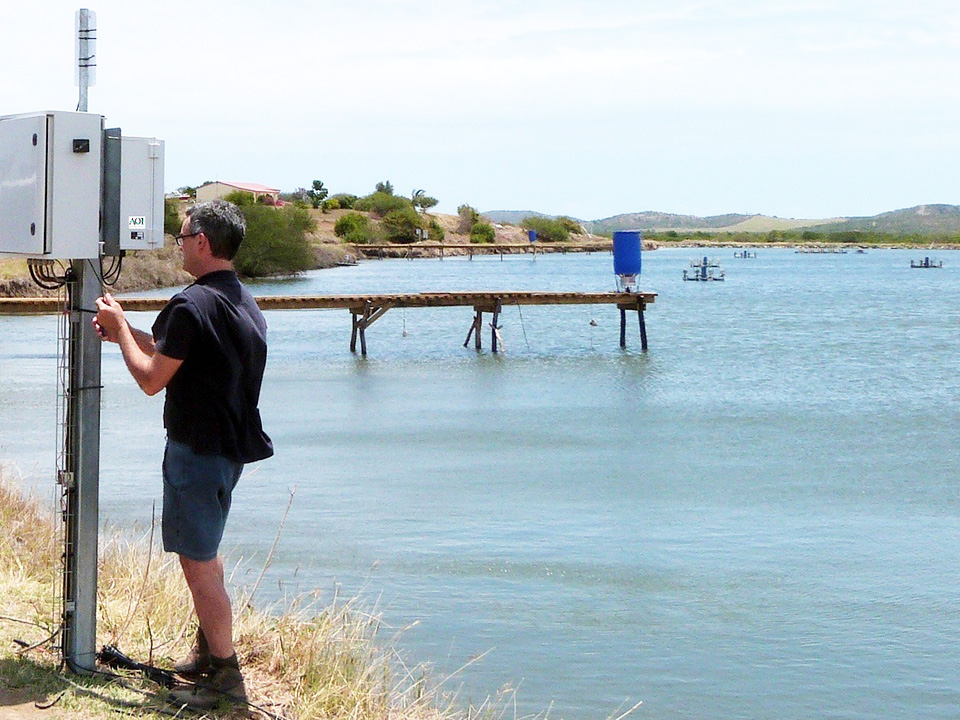
Innovation & Investment
Acoustic control improves feeding productivity at shrimp farms
In systems recently developed for shrimp farms, passive acoustic-based technology enables sensor-based control of multiple automatic feeders. Improved growth and feed conversion have been recorded at commercial farms using the technology.
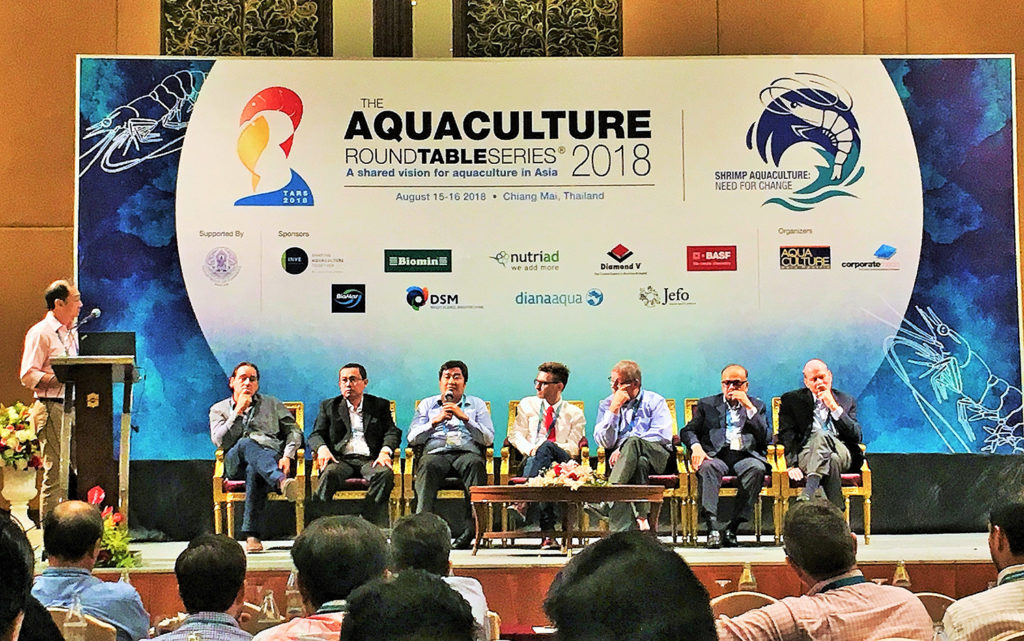
Intelligence
At Aquaculture Roundtable Series, talk of change for Thai shrimp
The theme of the Aquaculture Roundtable Series in Chiang Mai was “Need For Change.” That means innovations in all production phases of Thai shrimp.
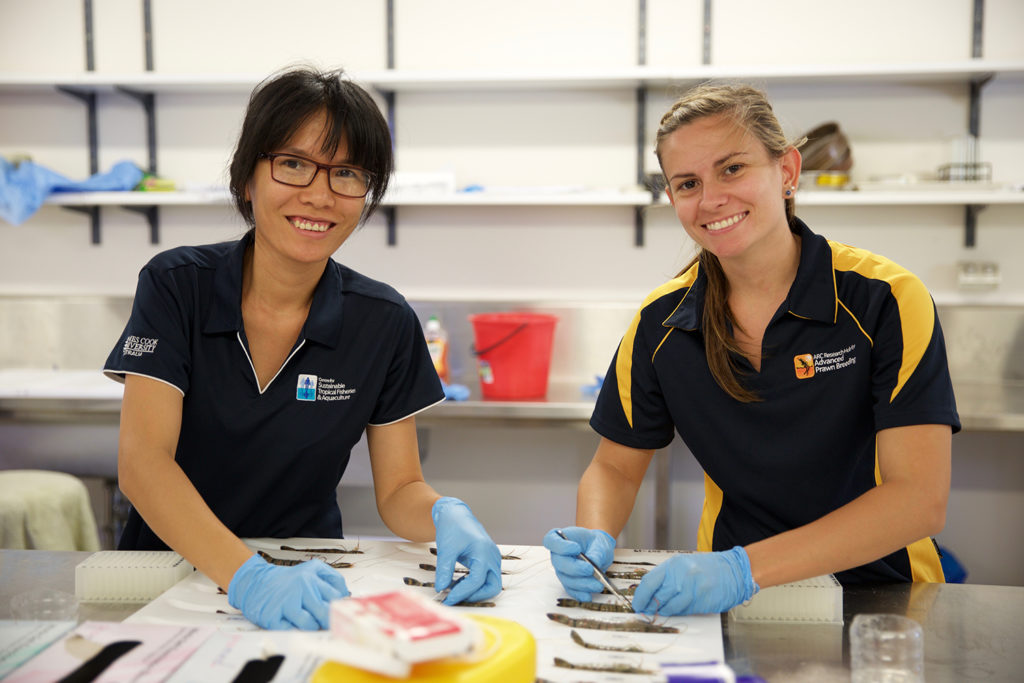
Health & Welfare
PCR testing of single-tissue samples can result in misleading data
A RT-qPCR study on shrimp with GAV infections showed infection loads could differ among different gill filaments and pleopods from the same shrimp.
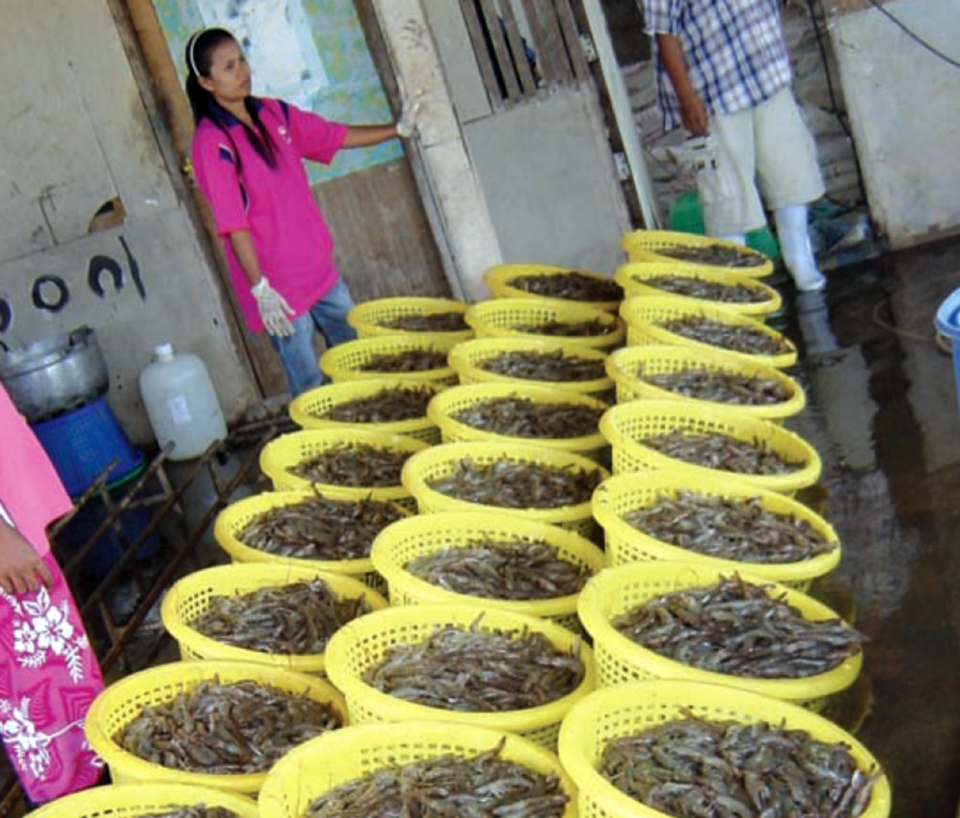
Intelligence
Thailand’s white shrimp revolution
Thailand's dramatic switch from black tigers to disease-resistant Pacific white shrimp has significantly increased profits.


